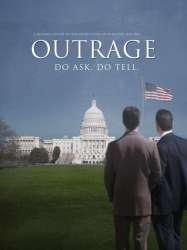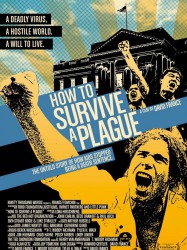Films with theme "Documentaire sur l'homosexualité", sorted by revenue

Paris Is Burning (1991)
, 1h18Directed by Jennie Livingston
Origin USA
Genres Documentary
Themes La mode, Films about sexuality, LGBT-related films, Transgender in film, Documentaire sur l'homosexualité, Documentary films about cities, LGBT-related films, LGBT-related film, Lesbian-related films
Actors Fran Lebowitz
Un documentaire sur les drag queens de New York. Des homosexuels noirs et des latinos se déguisent en femme et inventent une nouvelle danse imitant les poses des modèles sur les couvertures des magazines.

The Celluloid Closet (1996)
, 1h47Directed by Rob Epstein, Jeffrey Friedman
Origin USA
Genres Drama, Documentary, Historical
Themes Films about films, Films about sexuality, Bisexuality-related films, LGBT-related films, Documentary films about business, Documentary films about the film industry, Documentaire sur l'homosexualité, Documentary films about cities, LGBT-related films, LGBT-related film
Actors Susan Sarandon, Lily Tomlin, Armistead Maupin, Arthur Laurents, Antonio Fargas, Tom Hanks
Le film montre comment le cinéma hollywoodien a évoqué le thème de l’homosexualité, comment cette représentation a évolué au fil des ans et comment, en retour, elle a influencé la perception de l’homosexualité par le grand public.

Tarnation (2003)
, 1h30Directed by Jonathan Caouette
Origin USA
Genres Drama, Documentary, Romance
Themes L'adolescence, Films about children, Medical-themed films, Psychologie, Films about sexuality, LGBT-related films, Documentary films about business, Documentary films about the film industry, Documentaire sur l'homosexualité, Documentaire sur une personnalité, Documentary films about health care, Films about psychiatry, Films about disabilities, Autobiographical documentary films, Teen LGBT-related films, LGBT-related films, LGBT-related film
Actors Jonathan Caouette
Tarnation est l'autoportrait de Jonathan Caouette, 31 ans, qui dès l'âge de 11 ans décide de filmer la vie chaotique qu'il mène dans une famille texane, à Houston.

Trembling Before G-d (2001)
, 1h24Directed by Sandi Simcha DuBowski
Origin Israel
Genres Documentary
Themes Films about religion, Films about sexuality, Bisexuality-related films, LGBT-related films, Documentaire sur l'homosexualité, Documentary films about religion, Films about Jews and Judaism, LGBT-related films, LGBT-related films about religion, LGBT-related film
Trembling Before G-d interviews and follows several gay and lesbian Orthodox Jews, many only seen in silhouette, and also interviews several rabbis and psychologists regarding their views on homosexuality in Orthodox Judaism. The film repeatedly returns to several characters:

For the Bible Tells Me So (2007)
, 1h38Origin USA
Genres Documentary
Themes Films about religion, Films about sexuality, LGBT-related films, Documentaire sur l'homosexualité, Documentary films about religion, LGBT-related films, LGBT-related films about religion, LGBT-related film

Beefcake (1998)
, 1h37Directed by Thomas Fitzgerald
Origin Canada
Genres Drama, Documentary, Historical
Themes Films about sexuality, LGBT-related films, Documentaire sur l'homosexualité, LGBT-related films, LGBT-related film
Actors Joshua Peace, Daniel MacIvor, Joe Dallesandro, Jonathan Torrens, Thomas Fitzgerald, Bernard Robichaud
États-Unis, années 40. Dans une étonnante propriété se côtoient quantité d’hommes (presque) nus qui batifolent autour de la piscine. Ce décor, c’est celui dans lequel évolue Bob Mizer, fondateur de « The Athletic Model Guild », un magazine de photos où les hommes posent nus ou presque. Jack Lalane, Joe Dallessandro et Wayne Stanley, anciens modèles de Mizer, témoignent chacun à leur manière de leur expérience. Pour la plupart d’entre eux, Bob Mizer dotait la jeunesse américaine d’un bréviaire de la forme et de la santé sans aucune intention homoérotique. Des procès furent pourtant engagés et une chasse aux sorcières organisée contre ces photographes jugés scandaleux. Mêlant allégrement documents d’archives et scènes de fiction délirantes, ce documentaire est à la fois l’histoire d’un homme et celle d’une époque.

Outrage (2009)
, 1h29Directed by Kirby Dick
Origin USA
Genres Drama, Thriller, Documentary, Action
Themes Films about sexuality, LGBT-related films, Documentary films about historical events, Documentaire sur l'homosexualité, Documentaire sur une personnalité, Documentary films about politics, Political films, LGBT-related films, LGBT-related film
Actors Larry Kramer, Ronald Reagan
Outrage argues that several American political figures have led closeted gay lives while supporting and endorsing legislation that is harmful to the gay community. The film examines mass media's reluctance to discuss issues involving gay politicians despite many comparable news stories about heterosexual politicians and scandals. Outrage describes this behavior as a form of institutionalized homophobia that has resulted in a tacit policy of self-censorship when reporting on these issues. The film is based on the work of blogger Michael Rogers and his site BlogActive.com.

How to Survive a Plague (2012)
, 1h49Origin USA
Genres Biography, Documentary, Historical
Themes Medical-themed films, Films about sexuality, LGBT-related films, Documentary films about historical events, Documentaire sur l'homosexualité, Documentary films about politics, Documentary films about health care, Political films, LGBT-related films, HIV/AIDS in film, LGBT-related film
Actors Larry Kramer
Le film traite des premières années de l'épidémie du SIDA, et des efforts d'Act up et de Treatment Action Group .

I Am Divine (2013)
, 1h30Origin USA
Genres Documentary
Themes Films about films, Films about music and musicians, Films about sexuality, Films about television, LGBT-related films, Documentary films about business, Documentary films about the film industry, Documentaire sur l'homosexualité, Documentary films about music and musicians, Documentaire sur une personnalité, Musical films, LGBT-related films, LGBT-related film
Actors Divine, Jayne Mansfield, John Waters, Tab Hunter, Ricki Lake, David Lochary
Le documentaire retrace la vie de Glenn Milstead, dont le personnage de Divine a été sacré « plus belle femme du monde ». Petit garçon timide, jeune homme complexé, il découvre les bars gays puis le travestissement. Un voisin passionné de cinéma, John Waters, le fait tourner dans ses premiers films. Avec ses amis habilleur et maquilleur, Milstead crée le personnage excessif et scandaleux de Divine qu'il interprète dans les films Mondo Trasho, Multiple Maniacs et Pink Flamingos. À la fin des années 1970, il se lance dans la chanson et fait plusieurs tournées aux États-Unis et en Europe. Il revient au cinéma en 1981 avec Polyester, puis dans Lust in the Dust de Paul Bartel et Wanda's Café. Peu après le succès de Hairspray, il meurt d'une crise cardiaque dans son sommeil.

A Jihad for Love (2007)
, 1h21Directed by Parvez Sharma
Origin USA
Genres Documentary
Themes Films about religion, Films about sexuality, LGBT-related films, Documentaire sur l'homosexualité, Documentary films about religion, Films about Islam, LGBT-related films, LGBT-related films about religion, LGBT-related film

8: The Mormon Proposition (2010)
, 1h20Directed by Steven Greenstreet
Origin USA
Genres Documentary
Themes Films about families, Films about religion, Films about sexuality, LGBT-related films, Documentary films about law, Documentaire sur l'homosexualité, Documentary films about religion, LGBT-related films, Same-sex marriage in film, LGBT-related films about religion, LGBT-related film
Actors Dustin Lance Black
Director Reed Cowan, who is a former Mormon missionary, "planned on making a film about gay teen homelessness and suicide in Utah, but switched his focus to Mormon ideology because of how it contributes to the homophobia that causes these problems". The film focuses on the wealth and power of the The Church of Jesus Christ of Latter-day Saints, and how the Church uses the National Organization for Marriage to advocate for denial of rights to lesbian, gay, bisexual, and transgender (LGBT) Americans. It states that LDS Church leader Thomas S. Monson asked to ensure the passage of the controversial California Proposition 8. It also states that many homeless people in Utah are LGBT teens who were abandoned by their Mormon parents.

Divine Trash (1998)
, 1h37Directed by Steve Yeager
Origin USA
Genres Documentary
Themes Films about films, Films about sexuality, LGBT-related films, Documentary films about business, Documentary films about the film industry, Documentaire sur l'homosexualité, Documentaire sur une personnalité, LGBT-related films, LGBT-related film
Actors John Waters, Divine, Steve Yeager, Steve Buscemi, Mary Vivian Pearce, Robert Shaye

Paper Dolls (2006)
, 1h20Genres Documentary
Themes Films about religion, Films about sexuality, LGBT-related films, Transgender in film, Documentaire sur l'homosexualité, Documentary films about religion, Films about Jews and Judaism, LGBT-related films, LGBT-related films about religion, LGBT-related film

The Times of Harvey Milk (1984)
, 1h30Directed by Rob Epstein
Origin USA
Genres Documentary, Historical
Themes Films about sexuality, LGBT-related films, Documentary films about historical events, Documentaire sur l'homosexualité, Documentaire sur une personnalité, Documentary films about politics, Documentary films about cities, Political films, LGBT-related films, LGBT-related film
Actors Harvey Fierstein
The Times of Harvey Milk documents the political career of Harvey Milk, who was San Francisco's first openly gay supervisor. The film documents Milk's rise from a neighborhood activist to a symbol of gay political achievement, through to his assassination in November 1978 at San Francisco's city hall, and the Dan White trial and aftermath.

Hit So Hard (2012)
, 1h43Directed by P. David Ebersole
Origin USA
Genres Documentary, Musical
Themes Films about music and musicians, Films about sexuality, LGBT-related films, Documentaire sur l'homosexualité, Documentary films about music and musicians, Documentaire sur une personnalité, Musical films, LGBT-related films, LGBT-related film, Lesbian-related films
Actors Courtney Love, Melissa Auf der Maur, Sarah Vowell, Jenny Shimizu
The film begins with discussion amidst Hole's 1994 and 1995 world tour, then works backwards to Schemel's childhood growing up in Marysville, Washington, and details her coming out to her family as a lesbian, as well as her immersion in Seattle's music scenes, where she would eventually cross paths with Kurt Cobain. Through contemporary interviews with Schemel's bandmates Courtney Love, Eric Erlandson, and Melissa Auf der Maur, her beginnings in Hole are detailed, including her audition with Love and Erlandson in Los Angeles amidst the Rodney King riots, as well as her time living with Love and husband Kurt Cobain, and the songwriting process between Love, Schemel, and Erlandson. Additional commentary from fellow female drummers, musicians, peers, and friends of Schemel's are provided throughout. After the death of Hole's bassist Kristen Pfaff in 1994 (only two months after the suicide of Kurt Cobain), the band embarked on a world tour with Auf der Maur as Pfaff's replacement, and Schemel, along with Love, began heavily using heroin. Schemel's drug use leads to a breakup with her girlfriend, who acted as Love's personal assistant on the tour, and Schemel reflects on her time in a rehabilitation facility she checked into with Love after the conclusion of the tour in 1995.
 Connection
Connection